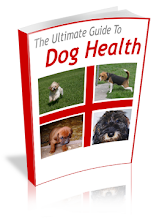
Six specific at home remedies for Poisoning and Fever, which you can use right away to Treat Your Pet At Home
Your pet should get a thorough nose to tail exam once a week. Get comfortable in examining your pet. Your pet should be fine with letting you put your fingers in his mouth or brushing his hair to feel for lumps.
The first thing that you have to be familiar with are ‘normals':
Vital Statistics: Pulse and Heart Rate
Normal resting rates:
Cats: 150-200 bpm
Small dogs: 90-120 bpm
Medium dogs: 70-110 bpm
Large dogs: 60-90 bpm
Pulse should be strong, regular and easy to locate.
Checking the pulse
The easiest place to locate a pulse is the femoral artery in the groin area. Place your fingers on the inside of the hind leg and slide your hand upward until the back of your fingers touches the abdomen. Gently move your fingers back and forth on the inside of the hind leg until you feel the pulsing blood. Count the number of pulses in 15 seconds and multiply that number by 4. This will give you the beats per minute
(bpm). If the pulse is elevated, then you may be dealing with a nervous pet, an underlying metabolic disease, such as hyperthyroidism, or a primary heart problem.
If the pulse is slower and weak, then I look for other signs of shock (i.e. internal
bleeding) or a poison, such as marijuana toxicity.
This is what I would advise in the case of poison:
TO YOUR VETERINARIAN.
If your pet is showing signs of ingesting a poison, it is important that she is examined by your veterinarian and treated appropriately. Some toxins can progress and lead to severe seizures. If you suspect Antifreeze poisoning, it must be treated within 4-6 hours, before irreversible kidney damage is done.
PURGE THE POISON.
In most cases of poisoning, getting your pet to vomit is the most important thing that you can do. DO NOT INDUCE VOMITING if something caustic has been consumed (such as drain cleaner or bleach). To induce vomiting, give hydrogen peroxide at 1 teaspoon per 10 lbs of body weight. If your pet does not vomit in 10 minutes, repeat again. NEVER do more than two treatments of peroxide.
You can also try salt: dilute 1 teaspoon of salt in a tablespoon of water per every
10lbs of body weight.
DELAY ABSORPTION.
Activated charcoal is readily available at most pharmacies. It delays absorption of any toxin by binding to the toxic compound in the stomach. The easiest way is to give the capsule form. For those garbage-eating dogs (such as my own dog) it is a good idea to have hydrogen peroxide and activated charcoal always on hand.
Temperature
A normal dog's temperature is 101 F (38.0 C), a normal cat's temperature is 102 F
(38.5 C). Taking your pet's temperature involves placing a thermometer in their
rectum. If your pet has a temperature of 103.5 F (39.5 C) or more, they have a fever.
Thermometer should be almost clean when removed. Abnormalities are indicated by
blood, diarrhea, or black, tarry stool. These are some of the remedies I would use if your pet had a fever:
KEEP THEM HYDRATED. Offer plenty of fresh water in different spots around the house. If your pet refuses to drink, use an eyedropper or turkey baster to squirt water into the side of its mouth. For an added boost, add Pedialyte, an electrolyte solution available from the pharmacy; minerals become depleted when your pet is dehydrated. Some pets prefer chicken or beef broth, or tuna juice; give them whatever works.
CALL YOUR VETERINARIAN. If a fever persists for more than 24 hours, and your
pet is not drinking, then CALL your VET.
HOMEOPATHIC.
A common remedy for fighting fever is Hepar sulph (Hepar sulphuris calcareum); give one 30C tablet every 6 hours for 3 days. Arnica is useful in fighting the aches and pains that go along with fever; give one 30C tablet per 40lbs of body weight every 4-6 hours.






















